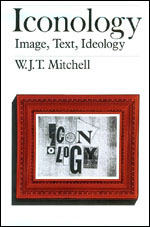David Campany: Photography and Cinema (2008)
Filed under book | Tags: · cinema, film, film history, image, photography

What did the arrival of cinema do for photography? How did the moving image change our relation to the still image? Why have cinema and photography been so drawn to each other? Close-ups, freeze frames and the countless portrayals of photographers on screen are signs of cinema’s enduring attraction to the still image. Photo-stories, sequences and staged tableaux speak of the deep influence of cinema on photography.
Photography and Cinema a considers the importance of the still image for filmmakers such as the Lumière brothers, Alfred Hitchcock, Michelangelo Antonioni, Jean-Luc Godard, Chris Marker, Mark Lewis, Agnès Varda, Peter Weir, Christopher Nolan and many others. In parallel it looks at the cinematic in the work of photographers and artists that include Germaine Krull, William Klein, John Baldessari, Jeff Wall, Victor Burgin and Cindy Sherman.
From film stills and flipbooks to slide shows and digital imaging, hybrid visual forms have established an ambiguous realm between motion and stillness. David Campany assembles a missing history in which photography and cinema have been each other’s muse and inspiration for over a century.
Publisher Reaktion Books, 2008
Exposures (London)
ISBN 1861893515, 9781861893512
160 pages
PDF (updated on 2012-7-15)
Comment (0)W. J. Thomas Mitchell: Iconology: Image, Text, Ideology (1986)
Filed under book | Tags: · art, art criticism, ideology, image, literary criticism, media theory, visual culture

“Mitchell undertakes to explore the nature of images by comparing them with words, or, more precisely, by looking at them from the viewpoint of verbal language.”
Publisher University of Chicago Press, 1986
ISBN 0226532291, 9780226532295
x+226 pages
Reviews: Lee B. Brown (The Journal of Aesthetics and Art Criticism, 1986), Roger Seamon (Canadian Philosophical Reviews, 1986), Patrick Maynard (London Review of Books, 1988), Anna J. Smith (Philosophy and Literature, 1988), Stefan Beyst (2010).
PDF (updated on 2012-7-18)
Comment (0)Ira Greenberg: Processing: Creative Coding and Computational Art (2007)
Filed under manual | Tags: · art, code, computer animation, computer art, design, image, interactivity, open source, performance, processing, programming, software, typography

“This book is written especially for artists, designers, and other creative professionals and students exploring code art, graphics programming, and computational aesthetics. The book provides a solid and comprehensive foundation in programming, including object-oriented principles, and introduces you to the easy-to-grasp Processing language, so no previous coding experience is necessary. The book then goes through using Processing to code lines, curves, shapes, and motion, continuing to the point where you’ll have mastered Processing and can really start to unleash your creativity with realistic physics, interactivity, and 3D! In the final chapter, you’ll even learn how to extend your Processing skills by working directly with the powerful Java programming language, the language Processing itself is built with.”
Foreword by Keith Peters
Publisher Springer, 2007
ISBN 159059617X, 9781590596173
810 pages
PDF (updated on 2020-1-20)
Comments (5)
